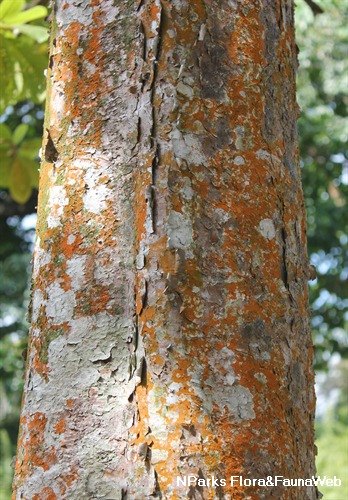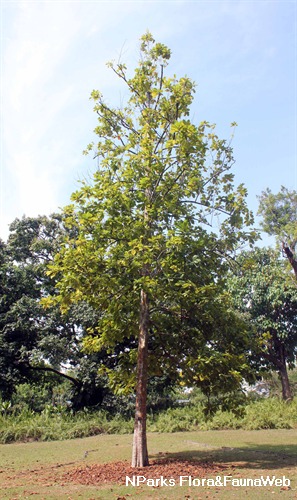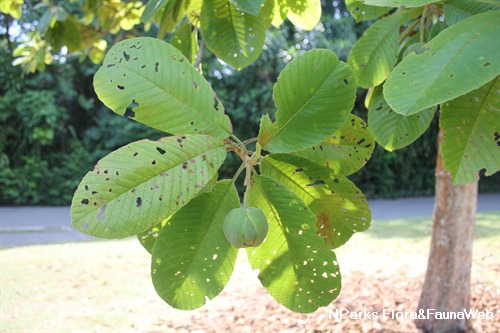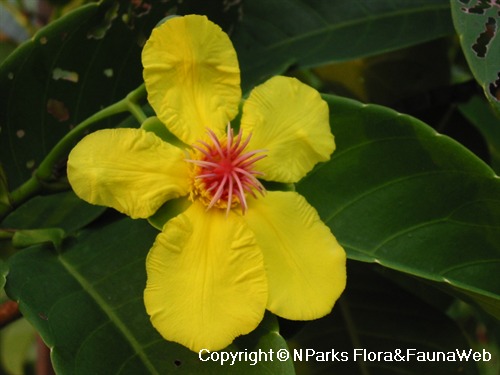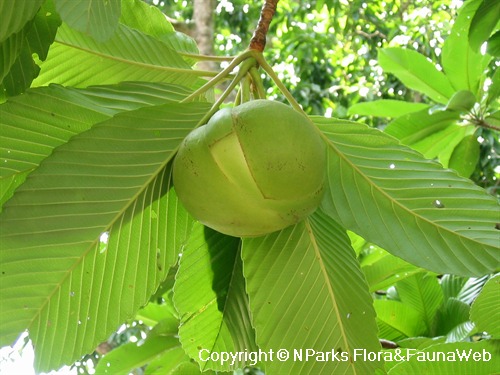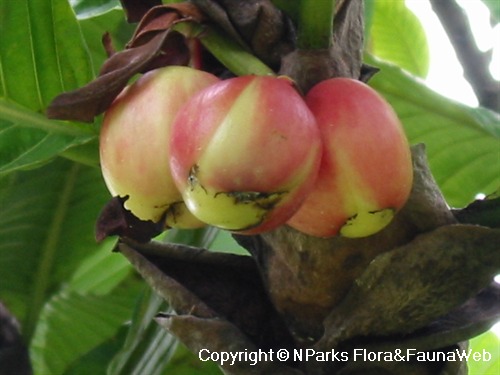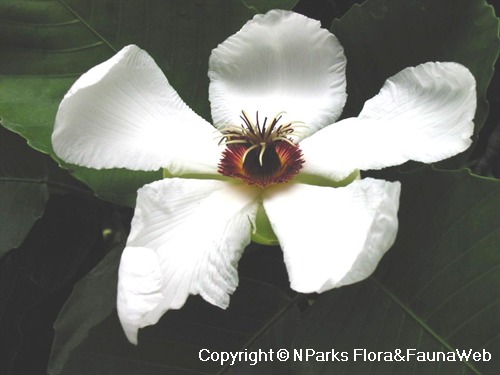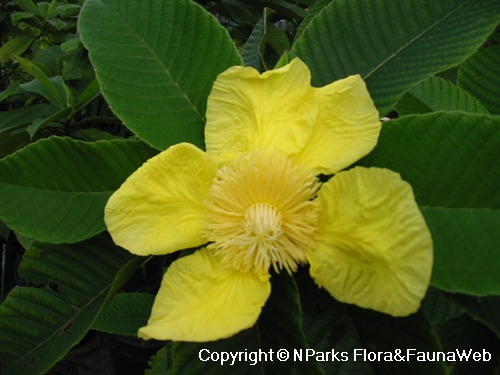
Back
Dillenia ovata Wall. ex Hook.f. & Thomson
| Family Name: | Dilleniaceae |
| Common Name: | Simpuh Beludu, Kedah Simpoh, Simpoh Beludu |
Name
Classifications and Characteristics
| Plant Division | Angiosperms (Flowering Seed Plants) (Dicotyledon) |
|---|---|
| Plant Growth Form | Tree (Big (>30m)) |
| Lifespan (in Singapore) | Perennial |
| Mode of Nutrition | Autotrophic |
| Plant Shape | Irregular |
| Maximum Height | 40 m |
Biogeography
| Native Distribution | Peninsular Malaysia, Sumatra and Borneo. |
|---|---|
| Native Habitat | Terrestrial (Primary Rainforest, Secondary Rainforest, Freshwater Swamp Forest) |
| Preferred Climate Zone | Tropical |
| Local Conservation Status | Non-native (Spontaneous (Casual)) |
Description and Ethnobotany
| Growth Form | It is an evergreen tree, up to 40 m tall and often developing stilt roots. |
|---|---|
| Foliage | Its stalked, alternately arranged leaves are ovate to obovate in shape, toothed along the margins, and densely hairy on the lower surface. |
| Flowers | Its yellow flowers are borne on racemes. |
| Fruit | Its fleshy fruits are capsules which split open when ripe, about 1.8 cm long. |
| Habitat | It grows in lowland freshwater swamp forests and lowland forests, up to 200 m altitude. |
| Associated Fauna | The aril-covered seeds are eaten by birds. |
| Cultivation | It can be propagated by seed. |
| Etymology | Latin ovata, egg-shaped, referring to the shape of the leaves. |
| Ethnobotanical Uses | Timber & Products: It is used to make planks. |
Landscaping Features
| Landscaping | It is suitable for swampy or waterlogged areas in parks and along streetscapes. |
|---|---|
| Desirable Plant Features | Ornamental Flowers |
| Landscape Uses | General, Suitable for Roadsides, Parks & Gardens, Small Gardens, Riverine |
Fauna, Pollination and Dispersal
| Pollination Method(s) | Biotic (Fauna) |
|---|---|
| Seed or Spore Dispersal | Biotic (Fauna) |
Plant Care and Propagation
| Light Preference | Full Sun |
|---|---|
| Water Preference | Moderate Water, Lots of Water |
| Plant Growth Rate | Moderate |
| Rootzone Tolerance | Moist Soils, Waterlogged Soils (Drains Site) |
| Propagation Method | Seed |
Foliar
| Foliage Retention | Evergreen |
|---|---|
| Mature Foliage Colour(s) | Green |
| Mature Foliage Texture(s) | Hairy / Hirsute |
| Foliar Type | Simple / Unifoliate |
| Foliar Arrangement Along Stem | Alternate |
| Foliar Attachment to Stem | Petiolate |
| Foliar Shape(s) | Non-Palm Foliage |
| Foliar Venation | Pinnate / Net |
| Foliar Margin | Serrate / Toothed |
| Leaf Area Index (LAI) for Green Plot Ratio | 3.0 (Tree - Intermediate Canopy) |
Floral (Angiosperm)
| Flower & Plant Sexuality | Bisexual Flowers |
| Flower Colour(s) | Yellow / Golden |
|---|---|
| Flower Grouping | Cluster / Inflorescence |
| Flower Location | Axillary |
| Flower Symmetry | Radial |
Fruit, Seed and Spore
| Mature Fruit Colour(s) | Green |
|---|---|
| Fruit Classification | Simple Fruit |
| Fruit Type | Dehiscent Dry Fruit , Capsule |
Image Repository
Others
| Master ID | 1551 |
|---|---|
| Species ID | 2844 |
| Flora Disclaimer | The information in this website has been compiled from reliable sources, such as reference works on medicinal plants. It is not a substitute for medical advice or treatment and NParks does not purport to provide any medical advice. Readers should always consult his/her physician before using or consuming a plant for medicinal purposes. |

